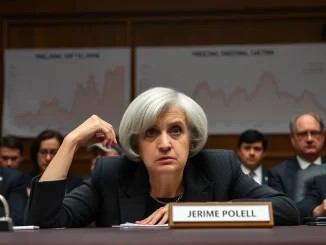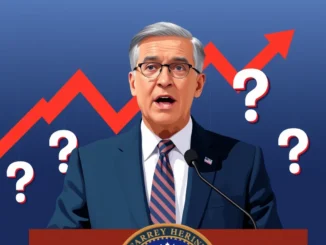
Crypto enthusiasts often watch global economic shifts closely, as they can influence market sentiment and liquidity. A recent significant move comes from the Bank of Russia, which just announced a notable change to its monetary policy. Understanding these shifts in traditional finance can provide valuable context for the broader financial landscape that cryptocurrency operates within.
Bank of Russia Implements Key Rate Cut
On June 6, the Bank of Russia made a significant announcement via its official website: a reduction in its key interest rate. The rate was lowered by 100 basis points, bringing it down to 20%.
What exactly is a key interest rate? It’s the primary tool a central bank uses to influence the economy. It’s the rate at which commercial banks can borrow money from the central bank. Lowering this rate typically makes borrowing cheaper for banks, which can then lend money more cheaply to businesses and consumers. This is intended to stimulate economic activity.
Why the Russia Interest Rate Decision Now?
The central bank cited two primary reasons for this move:
- Easing Inflation: The Bank of Russia indicated that inflationary pressures have begun to subside. High inflation erodes purchasing power and can destabilize an economy, so a decrease is often seen as a positive sign.
- Signs of Economic Stabilization: The bank also noted indicators suggesting the economy is showing signs of stabilizing after previous volatility.
This decision follows a period where the rate was kept high, often a measure used to combat rapid inflation and currency depreciation.
Context for the Russia Economy
Understanding this rate cut requires looking at the broader Russia economy. Like many nations, Russia has faced economic challenges influenced by various global and domestic factors. Central banks use interest rates as a lever to manage these conditions, attempting to balance growth, employment, and price stability. A rate cut like this suggests the central bank believes the immediate threat of high inflation has lessened enough to shift focus towards supporting economic activity.
Inflation Russia: What Does This Mean for the Future?
While the Bank of Russia sees inflation Russia easing, the path forward involves monitoring how this rate cut impacts prices and economic growth. Will lower borrowing costs effectively stimulate investment and consumption? Will inflation remain under control? These are crucial questions that the central bank and economists will be watching closely.
Potential Implications Beyond Russia’s Borders
Although this is a domestic policy decision for Russia, central bank actions in major economies can have ripple effects. They influence global market sentiment, capital flows, and even potentially the actions of other central banks. For those in the crypto space, observing these traditional finance moves provides insight into the macroeconomic climate, which often correlates with overall risk appetite in markets, including digital assets.
In Summary
The Bank of Russia’s decision to cut its key rate cut to 20% signals a pivot in its monetary policy, driven by perceived easing inflation and economic stabilization. This move aims to inject stimulus into the Russia economy. While a localized event, it’s a reminder that central bank policies worldwide are actively responding to economic conditions, creating a dynamic financial environment that crypto markets navigate alongside traditional assets. Keeping an eye on these developments helps build a more complete picture of the global financial landscape.



